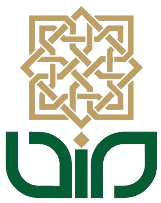By: Dinik Fitri Rahajeng Pangestuti, SE., M.Ak.
Lecturer of Sharia Accounting Study Program, FEBI UIN Sunan Kalijaga
Challenging economic conditions lead people to believe that saving or investing is unattainable, almost as if the aspiration for them is excessive. Consequently, this has become a key factor preventing individuals from seeking information about financial institutions and their offerings. It is as if financial constraints act as a barrier to enhancing financial literacy. Nevertheless, access to financial products and services is a fundamental right for all individuals and is crucial for enhancing living standards. Consequently, the establishment of an economy that prioritizes the lower middle class is imperative to ensure their access to financial products and services. The provision of financial services, particularly on a micro-level, can significantly contribute to the improvement of the lower middle class’s quality of life through the utilization of financial products (Financial Services Authority, 2018). Financial literacy encompasses not only knowledge, beliefs, and skills concerning financial institutions, products, and services, but also pertains to financial attitudes and behaviors (Financial Services Authority, 2017). According to a survey conducted by the Financial Services Authority in 2013, the level of financial literacy among the Indonesian population is categorized into four distinct levels (Financial Services Authority, 2013).
a. Well literate (21.84%), meaning having knowledge and confidence about financial institutions and financial products, including features, benefits and risks, rights and obligations related to financial products and services, and having skills in using financial products and services.
b. Sufficiently literate (75.69%), having knowledge and confidence about financial institutions and financial products and services, including features, benefits and risks, rights and obligations related to financial products and services.
c. Less literate (2.06%), only having knowledge about financial institutions, products, and services.
d. Not literate (0.41%), having no knowledge and confidence about financial institutions and financial products and services, and lacking skills in using financial products and services.
Recognizing the significance of financial literacy, there are at least six steps that can be implemented: 1) allocate a minimum of 1 hour per week or 10 minutes per day to devise financial plans, commencing with the basics such as income and expenses; 2) allocate 30 minutes per week or approximately 5 minutes per day to peruse financial articles; 3) engage in discussions with friends who possess a deeper understanding of financial matters; 4) try financial products; 5) Undertake financial simulations; 6) consult with a financial planner (Finansialku, 2014).
Conversely, household waste is an everyday occurrence, and its volume tends to increase with population growth. Household waste, stemming from human activities, can manifest as solid waste, such as garbage, or liquid waste, like wastewater from domestic tasks. Improper waste disposal can lead to a variety of disasters, impacting both the environment and human well-being. Globally, all nations acknowledge that waste poses a significant challenge, impacting the quality of life and the environment (Falah, 2014).
Household waste can be categorized into two main types: organic waste and inorganic waste. Organic waste originates from living organisms and contains carbon. This category includes human and animal waste, food scraps, dry leaves, and similar materials. On the other hand, inorganic waste does not contain carbon and encompasses items such as chemical fertilizers, plastic, rubber, batteries, and cans (Badung District Environmental and Health Agency, n.d.).
Recognizing the significant impact of household waste on the environment, it is imperative to take action to effectively manage it. Each family shares an equal responsibility in managing the household waste it generates. While waste poses an environmental challenge at the household level, it is noteworthy that women play a crucial role in addressing these seemingly disparate issues, imbuing them with greater significance. This initiative is known as “Green Savings: A Solution for Saving, Shopping, and Investing Without Money.”
This program establishes a connection between the challenges posed by waste and household waste and the issue of limited investment, particularly in relation to the Green Financial program that supports the Sustainable Development Goals (SDGs). The SDGs prioritize social and environmental considerations in development. The development process must take into account 17 key aspects, which are: 1. No Poverty, aiming to prevent inequality and poverty; 2. Zero Hunger; 3. Good Health and Wellbeing; 4. Quality Education; 5. Gender Equality; 6. Clean Water and Sanitation; 7. Affordable and Clean Energy; 8. Decent Work and Economic Growth; 9. Industry, Innovation and Infrastructure; 10. Reduced Inequalities; 11. Sustainable Cities and Communities; 12. Ensure Sustainable Consumption and Production Patterns; 13. Climate Action; 14. Life Below Water; 15. Life on Land; 16. Peace, Justice and Strong Institutions; 17. Partnerships for the Goals (United Nations, n.d.). The SDGs are based on four main pillars: 1) Social Pillar; 2) Economic Pillar; 3) Environmental Pillar; 4) Legal and Governance Pillar (BAPPENAS, n.d.).
In practice, these two issues are interconnected through collaboration with various stakeholders, including program participants, volunteers, neighborhood unit administrators, waste management partners, and financial institution partners, thereby offering a solution that benefits multiple parties.
